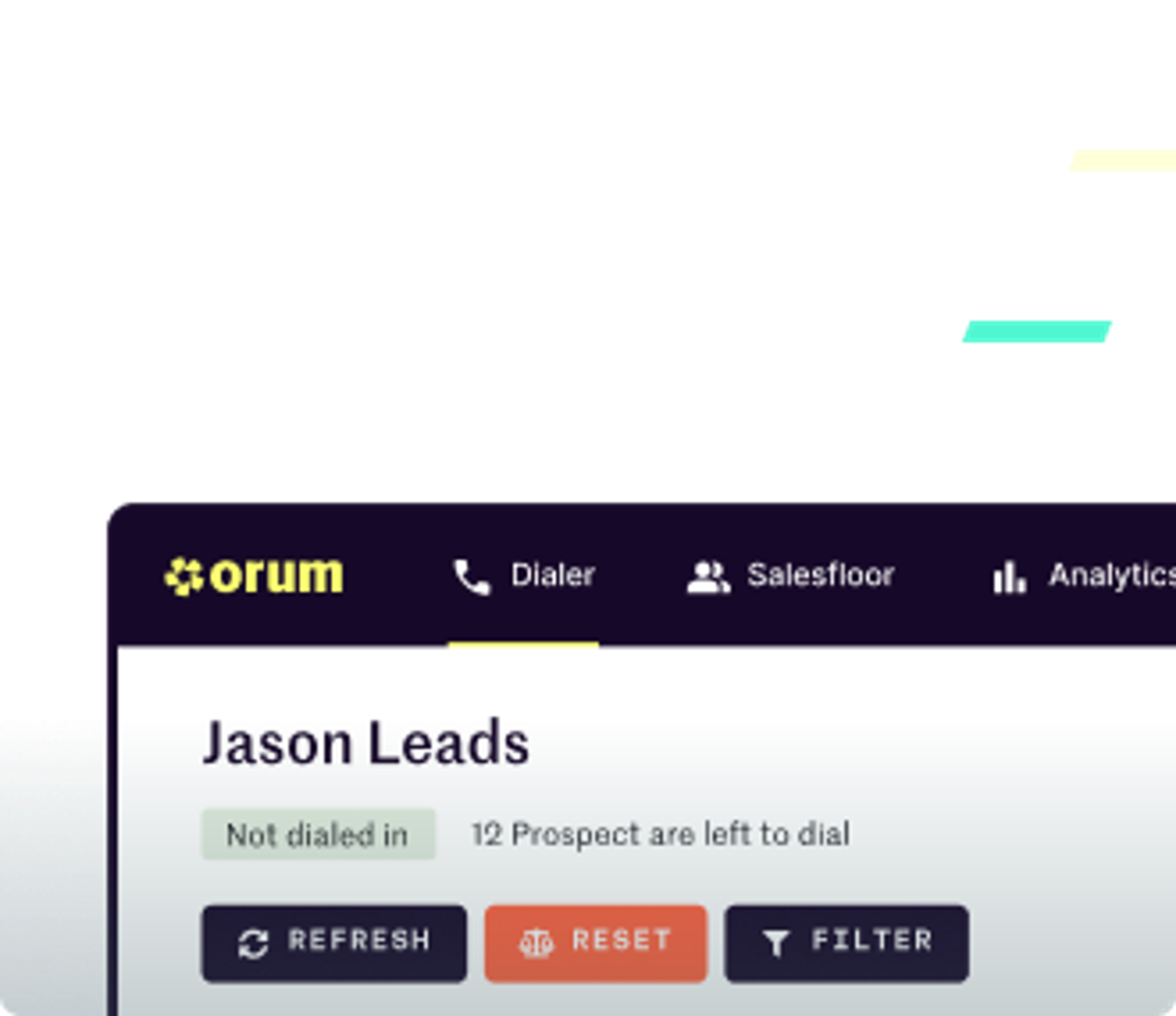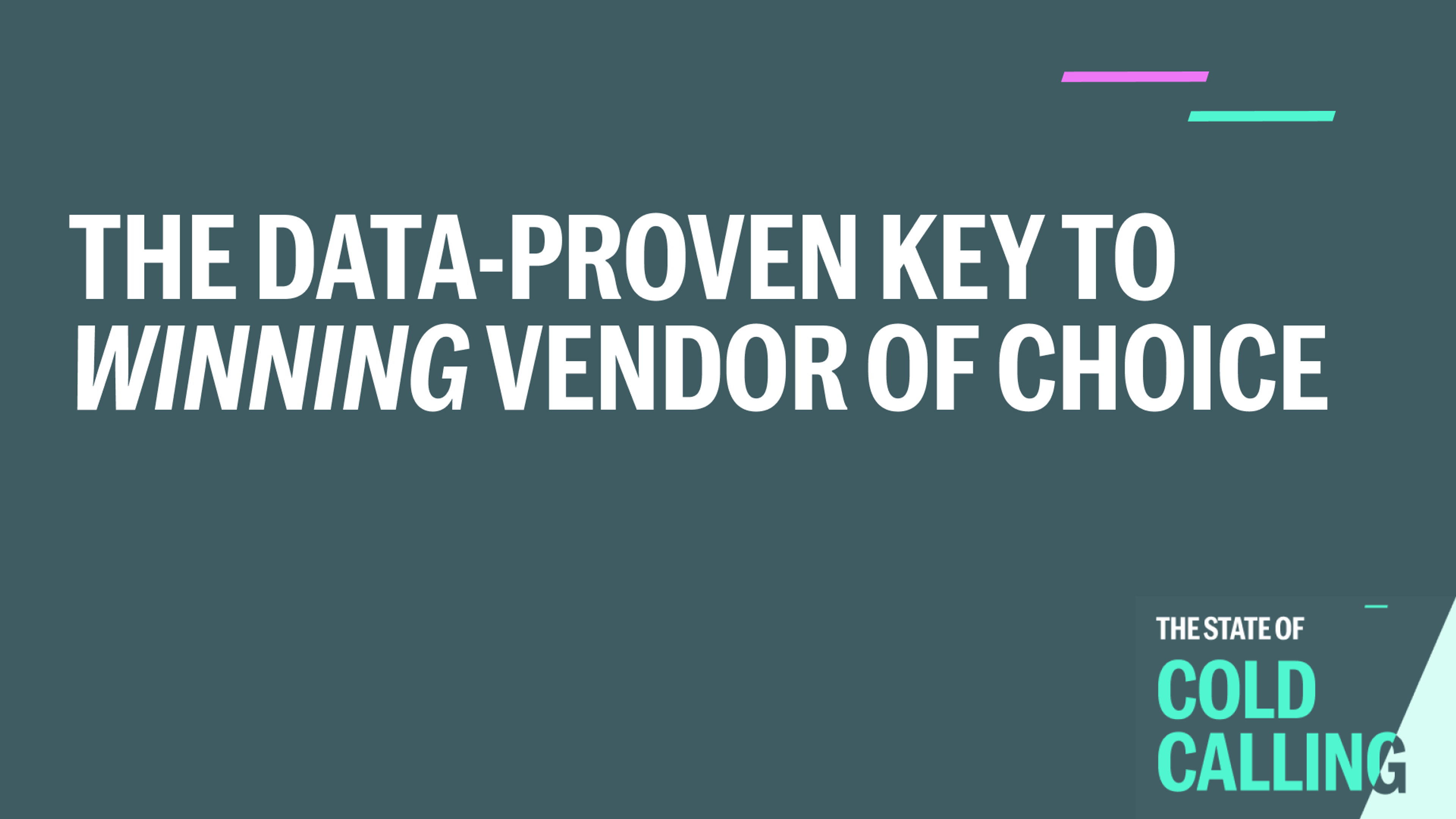Optimize the Cost of Sales: Build an Efficient Sales Plan with Key Metrics & Strategies


What if your sales team could consistently outperform their sales quotas without working longer hours or burning out? And your sales processes ran so efficiently that reducing the cost of sales and other administrative expenses became a natural byproduct of your daily operations?
Optimizing the cost of sales is a top priority for sales leaders looking to drive efficiency and maximize revenue. Yet, many struggle to fine-tune their sales processes and balance fixed and variable costs to achieve consistent performance.
You can turn this challenge into a growth opportunity by tracking key metrics, leveraging automated processes, and implementing strategies and tactics that are grounded in data.
In this article, we’ll discuss key strategies for streamlining sales processes, setting actionable goals, and achieving quotas without inflating costs.
Request a demo today to discover how Orum can help you optimize your sales efforts.
Using technology and AI to reduce the cost of sales and grow your pipeline: 6 Key strategies
You already know technology and AI can improve all your sales processes. But given the vast amount of data and the complex sales strategies spanning across different mediums, such as social media and e-stores, implementing tech-enabled processes and AI is essential.
AI can automate many tedious, manual tasks that would otherwise add significantly to your operating costs.
For example, AI can assist in monitoring essential sales metrics, such as conversion rates and customer acquisition costs, providing insights into your team's performance and operational expenses. This detailed tracking supports informed decision-making and enhances your team's overall efficiency.
From sales tracking to automating workflows, AI simplifies processes and delivers actionable insights that help improve outcomes.
Studies show AI can lead to:
- 50% increase in sales leads
- 60% reduction in call time
- 60% decrease in associated costs
Let’s explore six key strategies to achieve these results.
1. Define which metrics are most important to you
Optimizing sales costs depends on effectively tracking key sales performance indicators. AI tools and automation simplify and scale performance monitoring.
When setting sales quotas, clearly understanding metrics like customer acquisition cost, pipeline value, and win rate percentage ensures that goals are realistic and aligned with overall business objectives.
Focus on metrics that deliver actionable insights, such as:
- Customer acquisition cost (CAC): Measures how much you spend to gain a new customer.
- Lead conversion rate: Tracks the efficiency of turning prospects into customers.
- Sales cycle length: Shorter cycles indicate efficiency.
- Cost per lead: Pinpoints spending effectiveness on lead generation.
- Pipeline value: Shows the total potential revenue of deals in progress.
- Revenue per SDR: Measures productivity and contribution to revenue.
- Win rate percentage: Tracks success in closing deals.
If you’re unsure where to start, look for tools that help you track your business's most critical metrics.
For instance, Orum’s Analytics platform helps you track indirect and direct sales costs alongside KPIs, enabling smarter resource allocation and strategy refinement.

2. Prioritize high-value prospects for better ROI
Allocating your resources to low-value prospects can derail your team's efforts to meet their sales quotas and significantly increase your cost of sales. Modern AI-powered tools help you focus on high-value leads with the highest chances of conversion right from the start.
Orum’s solution Hot Numbers, for instance, can analyze factors like engagement history, lead scoring, and past behavioral patterns to give your sales teams clear direction on how to prioritize their efforts.
This allows you to identify prospects most ready to connect, eliminating guesswork so that you can allocate your team’s time and budget to leads that are likely to yield better gross profit.
For example, Orum's AE team made 173 connections during a call blitz focused on Hot Numbers, achieving a 30% connection rate.
The result? Enhanced efficiency, reduced wasted time, and better overall quota attainment. This should come as no surprise as a study by the Boston Consulting Group found that integrating AI into marketing strategies can lead to an average increase of 20% in conversion rates.

3. Leverage automation to reduce costs and boost productivity
Sales teams often spend a significant portion of their time on repetitive tasks, like dialing numbers, leaving voicemails, or routing calls. While necessary, these activities can significantly increase your admin costs and take time away from high-value tasks.
Automation simplifies these routine processes, enabling your team to focus on meaningful conversations and revenue-generating activities.
During the critical sales ramp-up period, automation allows SDRs to prioritize impactful interactions rather than being bogged down by manual dialing or voicemail drops.
For instance, tools that automate dialing save time by eliminating the need for manual input, while automated voicemail drops ensure consistent follow-up with pre-recorded messages delivered seamlessly. Call routing automation instantly directs incoming calls to the right person, reducing delays and improving both customer experience and operational efficiency.
Orum’s AI-powered Dialer, streamlines these processes by connecting your team with more prospects and eliminating manual tasks prone to error. Its power and parallel dialers allow your team to call one or multiple numbers simultaneously, freeing up time for meetings and boosting productivity.
Users report a 43% increase in conversations, enabling teams to scale outreach efforts without proportional increases in headcount or costs. Additionally, automation improves accuracy by reducing the risk of dialing errors or missed follow-ups—key factors in building trust with prospects.
4. Streamline workflows to maximize sales team efficiency
Sales teams perform best when focused on client interaction and deal closure, not struggling with complicated systems or multiple tools.
Automating your CRM and sales tracking streamlines your workflow, freeing up more time for selling and less for admin.
For example, seamless integration with CRMs like Salesforce or HubSpot and Sales Engagement Platforms (SEPs) like Outreach or SalesLoft allows your team to access all necessary data and communication tools in one place.
This eliminates the need to switch between platforms to log activities, retrieve contact information, or track progress. As a result, you can focus on building relationships and achieving their sales quotas.
By eliminating the need to switch between platforms to log activities, retrieve contact information, or track progress, your team can concentrate on building relationships and achieving sales quotas. Automation also ensures that data remains consistent and up-to-date across systems, reducing manual entry errors and inconsistencies.
Additionally, automated workflows improve sales tracking and reporting accuracy. Managers gain real-time visibility into key sales KPIs like pipeline value, sales cycle length, and win rates, empowering them to make data-driven decisions to refine strategies and allocate resources effectively.
5. Optimize international outreach with scalable solutions
Expanding your sales efforts globally introduces new opportunities, but it also brings unique challenges. Diverse time zones, varying regulations, and language barriers can make international outreach feel overwhelming.
One key area to focus on is international dialing. Tools that provide global dialing capabilities allow your sales team to connect with prospects anywhere in the world without juggling multiple platforms or dealing with inconsistent calling rates.
These systems streamline communication, enabling your team to engage with international leads as effortlessly as domestic ones.
A unified solution with features like CRM integration and AI-driven analytics ensures your team can operate efficiently, no matter the scale of your operations.
Whether your goal is to reach new markets or enhance existing international operations, scalable solutions help you reduce the cost of sales by streamlining processes and minimizing inefficiencies. They enable you to maintain a consistent approach, maximize team productivity, and achieve better quota attainment.

6. Make data-driven decisions to refine your sales strategy
Building an effective sales strategy requires actionable insights, not guesswork. AI-powered tools help centralize and analyze data quickly, offering insights into key metrics like pipeline value, win rates, and sales cycle lengths.
This allows you to identify what’s working, refine processes, and allocate resources more effectively.
For example, Orum’s AI Dialer automates outreach while tracking metrics such as call connection rates, talk durations, and follow-up success rates.
This granular data helps your team improve scripts, adjust targeting, or focus on high-performing channels. Predictive analytics further enhance your strategy by forecasting quota attainment and enabling proactive adjustments to underperforming campaigns.
Organizations that adopt data-driven tools often see significant improvements in efficiency and ROI. A McKinsey report found that businesses using data insights achieve a 20-25% boost in sales productivity and a 15-20% reduction in costs.
A data-driven sales strategy optimizes daily operations and fuels long-term growth. Data clarifies resource allocation and SDR performance, improving decisions.
By leveraging tools like Orum's AI Dialer and call analytics, your team can optimize operations, allocate resources more effectively, and drive sustainable growth.
Optimize the cost of sales with data-based strategies and AI tools
Optimizing the cost of sales requires a thoughtful combination of technology, data-driven metrics, and targeted strategies. By leveraging AI-powered tools, prioritizing high-value leads, and automating repetitive tasks, your sales team can:
- Reduce inefficiencies: Eliminate time-consuming manual processes, such as dialing and data entry, freeing up your team to focus on meaningful interactions.
- Improve outreach: Engage more prospects in less time with scalable solutions like automated dialing and follow-up, ensuring consistent and timely communication.
- Enhance resource allocation: Use data-driven insights to focus efforts on high-value leads and channels with the highest ROI.
- Boost productivity: Achieve higher conversion rates and better quota attainment without needing to expand headcount proportionally.
- Lower operational costs: Streamline workflows to reduce administrative burden and improve overall cost-effectiveness.
Research shows that businesses leveraging AI and automation see transformative gains in productivity and cost management.
Tools like Orum's AI Dialer and call analytics provide a scalable foundation for immediate improvements while positioning your team for long-term growth.
Meanwhile, Orum’s virtual Salesfloor drives better team alignment, faster skill development, and more consistent execution of sales strategies.
Combined with Orum’s Call Library, which offers easy access to successful call recordings for training and refinement, these tools empower your team to continuously improve their approach and hit targets.
Request a demo to learn how Orum’s solutions can empower your sales team to exceed quotas and reduce costs.
Frequently asked questions about optimizing sales costs
How can I reduce the cost of acquiring new customers?
Automate lead qualification and focus on high-value prospects. Orum’s Hot Numbers and AI Dialer make it easy to connect with promising leads faster, saving time and money.
How does automation help lower sales costs?
Automation eliminates repetitive tasks, reduces errors, and increases productivity. With tools like Orum’s call routing and voicemail drops, your team can focus on selling instead of manual processes.
How can I empower my sales team to improve efficiency?
Invest in SDR training and streamlined tools that integrate with CRMs. Orum’s platform simplifies workflows, enabling reps to focus on achieving their sales quotas effectively.





